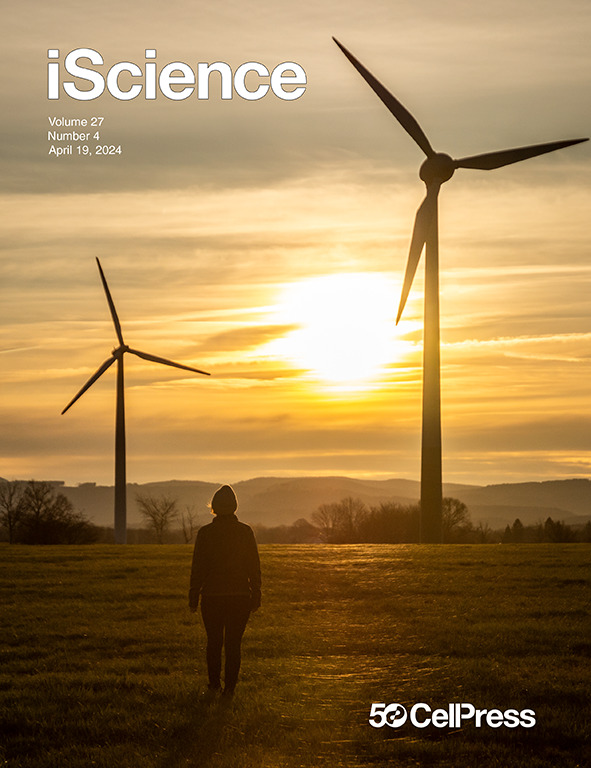Birch pollen allergen-induced dsDNA release activates cGAS-STING signaling and type 2 immune response in mice
IF 4.6
2区 综合性期刊
Q1 MULTIDISCIPLINARY SCIENCES
引用次数: 0
Abstract
Detecting cytoplasmic or extracellular DNA from host or pathogen origin by DNA sensor cyclic GMP-AMP synthase (cGAS) and stimulator of interferon genes (STING) triggers immune responses with secretion of type I interferons and inflammatory cytokines. However, STING agonists function as type-2 adjuvant promoting allergic asthma. Here, we asked how cGAS/STING signaling pathway influences allergen-induced type-2 immune responses in models of allergic airway diseases induced by birch pollen extract, house dust mite, or ovalbumin plus Alum. We report increased extracellular dsDNA in the airways, together with cGAS and STING gene expression, following allergen challenge in these models, correlating dsDNA and type-2 cytokine IL-4, IL-5, and IL-13 release. Allergen-induced type-2 immune responses were reduced in cGAS- or STING-deficient mice. Further, blocking cGAS function with the specific inhibitor RU.521 protected mice from birch pollen allergen-induced airway inflammation and type-2 immune responses. Thus, DNA sensing by cGAS contributes to type-2 immune responses and may represent a therapeutic target for allergic lung inflammation.

DNA 传感器环 GMP-AMP 合成酶(cGAS)和干扰素基因刺激器(STING)检测来自宿主或病原体的细胞质或细胞外 DNA 会触发免疫反应,分泌 I 型干扰素和炎症细胞因子。然而,STING 激动剂可作为促进过敏性哮喘的 2 型佐剂。在此,我们探讨了 cGAS/STING 信号通路如何影响桦树花粉提取物、屋尘螨或卵清蛋白加明矾诱导的过敏性气道疾病模型中过敏原诱导的 2 型免疫反应。我们报告了这些模型在受到过敏原挑战后气道中细胞外 dsDNA 的增加以及 cGAS 和 STING 基因的表达,并将 dsDNA 与 2 型细胞因子 IL-4、IL-5 和 IL-13 的释放联系起来。在 cGAS 或 STING 缺失的小鼠中,过敏原诱导的 2 型免疫反应减弱。此外,用特异性抑制剂 RU.521 阻断 cGAS 功能可保护小鼠免受桦树花粉过敏原诱发的气道炎症和 2 型免疫反应的影响。因此,cGAS的DNA感应有助于2型免疫反应,可能是过敏性肺部炎症的治疗靶点。
本文章由计算机程序翻译,如有差异,请以英文原文为准。
求助全文
约1分钟内获得全文
求助全文
来源期刊

iScience
Multidisciplinary-Multidisciplinary
CiteScore
7.20
自引率
1.70%
发文量
1972
审稿时长
6 weeks
期刊介绍:
Science has many big remaining questions. To address them, we will need to work collaboratively and across disciplines. The goal of iScience is to help fuel that type of interdisciplinary thinking. iScience is a new open-access journal from Cell Press that provides a platform for original research in the life, physical, and earth sciences. The primary criterion for publication in iScience is a significant contribution to a relevant field combined with robust results and underlying methodology. The advances appearing in iScience include both fundamental and applied investigations across this interdisciplinary range of topic areas. To support transparency in scientific investigation, we are happy to consider replication studies and papers that describe negative results.
We know you want your work to be published quickly and to be widely visible within your community and beyond. With the strong international reputation of Cell Press behind it, publication in iScience will help your work garner the attention and recognition it merits. Like all Cell Press journals, iScience prioritizes rapid publication. Our editorial team pays special attention to high-quality author service and to efficient, clear-cut decisions based on the information available within the manuscript. iScience taps into the expertise across Cell Press journals and selected partners to inform our editorial decisions and help publish your science in a timely and seamless way.
 求助内容:
求助内容: 应助结果提醒方式:
应助结果提醒方式:


